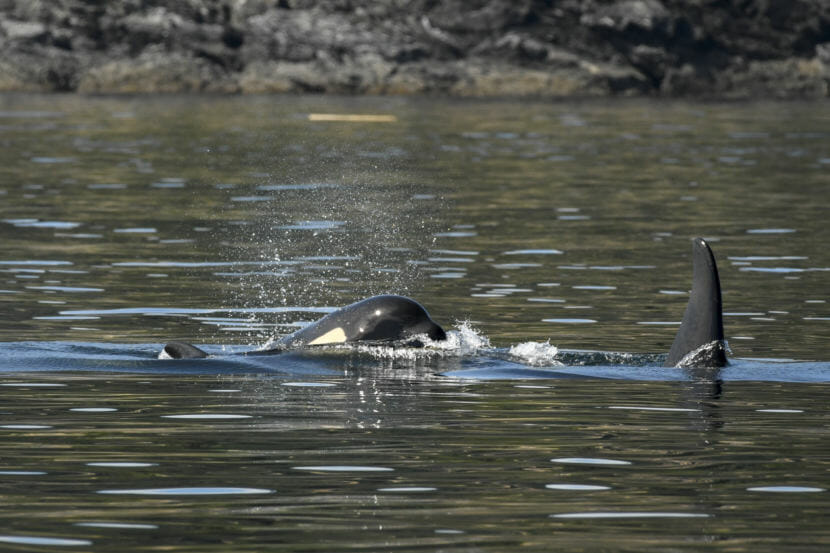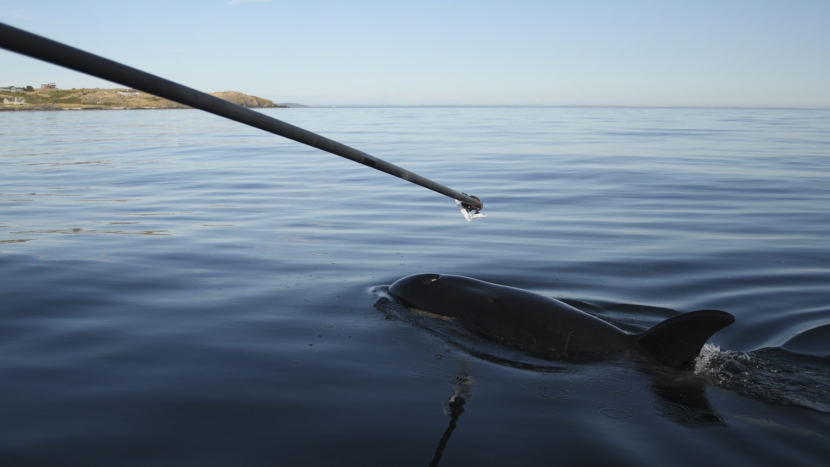
Whale scientists and a federal agency are weighing the risks and benefits of giving food and medicine to an emaciated endangered orca. The orca has been under observation in the border waters between Washington and British Columbia in recent weeks.
The 4-year-old female is a younger member of the same killer whale family that’s been in the news because of a mother orca who persists in tending to her dead calf. The 4-year-old orca is showing signs of starvation and infection. NOAA Fisheries spokesman Michael Milstein said options on the table include feeding live Chinook salmon to the orca, possibly laced with medication.
“We want to do this very carefully and deliberately because we don’t want to go into a situation where we’re creating an animal that becomes dependent on human handouts for food,” Milstein said. “That’s certainly not a recipe for survival in the wild, so we have to be very careful not to go down that road.”
Before a decision to intervene is taken, researchers in boats are trying to get a better handle on what’s wrong with the young orca, known as J50. They’ve got a drone ready to capture full body shots from above and also want to collect fecal and breath samples for analysis.
An earlier attempt in late July to collect droplets of breath using a long boom held over J50’s blowhole yielded too small of a sample to provide a definitive diagnosis.

“We’ve been watching J50 now for a few weeks and watching her condition seem to deteriorate, so there’s been increasing concern about that,” Milstein said in an interview Friday.
Milstein said J-pod was making the urgent data collection task difficult on Friday by disappearing from sight. He said the family group was last seen headed out the Strait of Juan de Fuca toward the west coast of Vancouver Island.
Whale scientists also want to collect the dead calf of the seemingly grieving mother, J35, to do a necropsy if possible. That could reveal why the newborn died about a half-hour after birth.
The critically endangered population of Southern Resident killer whales is down to 75 individuals. As a young female, J50 holds particularly high value because of her “reproductive capacity to the population,” Milstein said.
Against this backdrop, a Southern Resident Killer Whale Recovery Task Force convened by Washington Gov. Jay Inslee in March meets in Wenatchee on Tuesday to formulate short and long term recommendations. The task force wants to address the major factors affecting orca survival of lack of prey, environmental contaminants and disturbance by vessels. Possible recommendations could include further restrictions on salmon fishing, speed limits for ferries to reduce underwater noise and increased hatchery production of Chinook salmon. The recommendations will be finalized in the fall.
